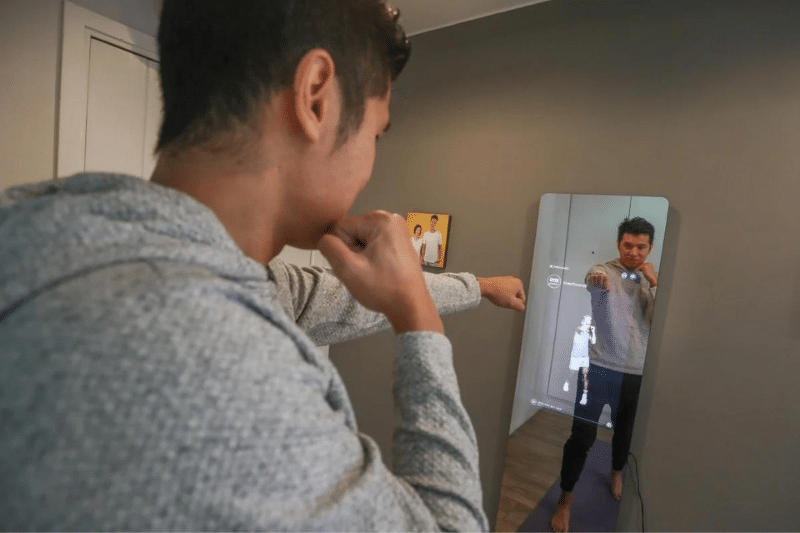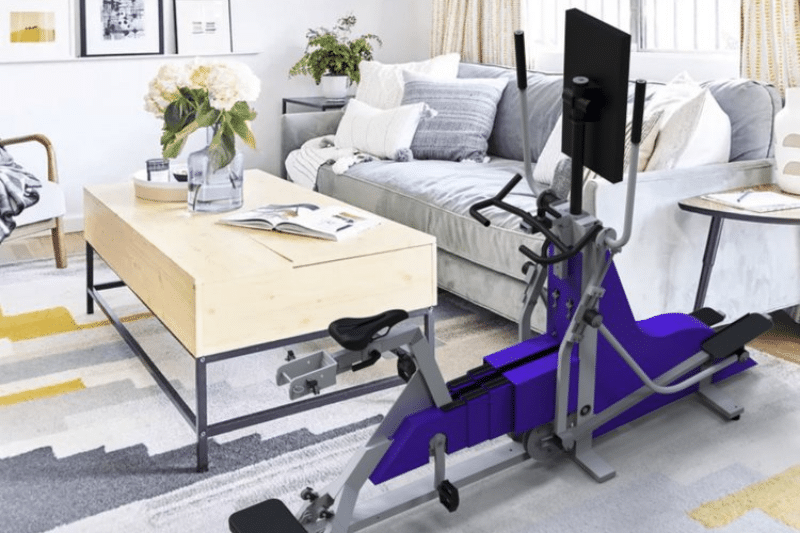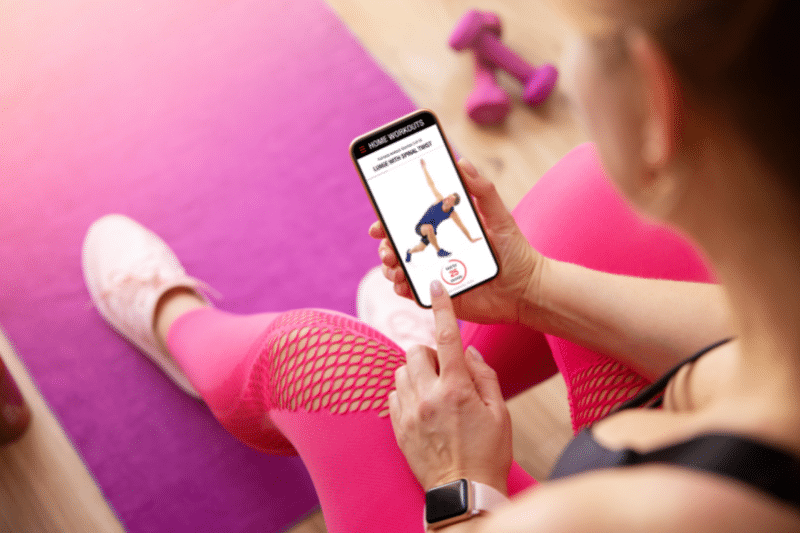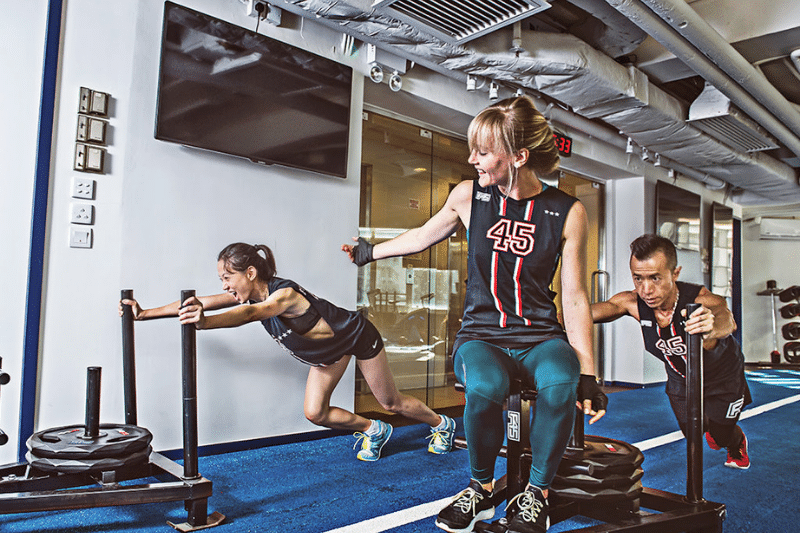The home fitness industry has experienced a boom following the onset of the Covid-19 pandemic. But is this simply a trend waiting for restrictions and gyms to open up?
A prolonged pandemic era has resulted in an increased awareness of keeping fit and healthy, especially from the socially distanced comfort of one’s own home. Increasing demand for residential gym equipment and upgrades in smart fitness technology are major factors driving growth in the at-home fitness industry, hindered only by high costs. Sports retailer Decathlon reported a 190% spike in sales of cross-training and toning bands in the first half of 2021, as well as a 57% increase in the sale of weight equipment.
In these unprecedented times, technology has been used to promote fitness and wellness more than ever before. An example of this is the Kara Mirror, developed by Hong Kong-based tech startup OliveX, a leading home fitness provider. The company provides its services via online remote instruction using Artificial Intelligence (AI) technology and 5G-facilitated demonstrations.

The Kara Mirror appears to be a full-length mirror, but operates more like a tablet, enabling users to tap on its screen to participate in online classes or watch fitness video tutorials. The HD touchscreen display uses speakers, cameras, Bluetooth, and receivers to connect to mobile networks. There is a real-time AI analysis function that can correct movements and postures to facilitate the safety and effectiveness of home workouts.
In an interview with HKTDC Research, the CEO of OliveX Holdings, Keith Rumjanh, stated, “As opportunities for going out to exercise diminish, fitness buffs seem to be getting more aggressive when setting their online fitness‑training goals. This greatly increases the number of people doing high‑intensity aerobic fitness exercise. Gyms and other sports venues were the main users of KARA Mirror before Covid-19, but home workouts are gradually becoming the mainstream amid the pandemic. In addition to an increase in the number of home users, a wider scope of usage has also been seen. Users are gradually upgrading from leisure activities such as basic yoga and flexibility training to courses of higher intensity and a greater amount of exercise.”

In Taiwan, fitness companies reported a 600% increase in sales in the summer months of 2021 – the increased demand leading to shortages of popular items. Stride, a fitness company founded in Taiwan by Joseph Prosnitz following his own health situation, has developed both a machine and a phone application to facilitate the path to a healthier lifestyle amid the era of lockdowns and quarantines. The company hopes to offer a complete gym experience, compacted into one machine – the Stride Transformer, which is able to function in different modes, namely, biking, running, rowing, and cable strength. All the while, it only takes up as much room as a single treadmill.

Existing in conjunction with the machine is Stride-360, the companion app and social fitness platform that enables users to track exercise data, and find motivation by connecting one with friends and the larger workout community. Smart sensors in the Transformer record parameters and upload data to the app to correct and learn from the users exercise experience. The app also enables users to have a gamified social experience by forming teams to compete and support one another, creating a more enjoyable experience overall.
Apps have taken the mainstage in the home fitness industry, as they provide the ability to receive guidance and support without the need for major pieces of equipment. In 2018, approximately 250 thousand health and fitness apps were available on online stores, according to a study by Australia’s Bond University. Technavio, a research and advisory company, predicted the industry would expand by 12% annually until 2024. Although these numbers were calculated before the pandemic, many fitness leaders across the globe have already moved their businesses online.

A study conducted in 2019 forecast that the virtual fitness market value would increase from US$6 billion to US$59 billion by the year 2027. The APAC region is predicted to have the highest growth rate, particularly with health and wellness apps that feature pre-recorded or live streamed classes. According to the study, these “appear to be the most cost-effective solution in developing nations across Asia-Pacific.”
F45 Training, a gym franchise in Hong Kong, noted the issues of online fitness classes, following a 40% retention rate of clients after the classes switched to online, despite having a small and loyal customer base. Shelley Clark, owner of the F45 franchise, stated in an interview with Nikkei, “There are health issues you simply cannot address online, such as why someone is overweight. You can’t get the same depth of information as you would from face-to-face training.”

Due to Hong Kong’s pandemic situation, moving from lockdown to lockdown, Clark shared her opinion on virtual gym classes – “We thought this is where the fitness industry was going, but the feedback from members was that online classes are good for a short period only,” says Clark. “We are now in our second lockdown. Between lockdowns, demand for Live classes fell to the point that it was simply not viable to run them anymore.” This demonstrates the waning interest for classes that do not provide the motivation that one might gain from in-person classes.
Overall, only time will tell if the at home gym and workout industry will prevail over the course of the pandemic and afterwards. The industry has certainly experienced a boom, but the sustainability of the sector may wane with gyms opening back up following the improvement of the Covid-19 situation.
Related Articles
Home Workout Guide: 8 Absolute Best Ways to Stay Fit
Stronger Together: How Pherform is Empowering Women in Hong Kong
Stryde: How Two Non-Technical Founders Built a Successful Fitness App





